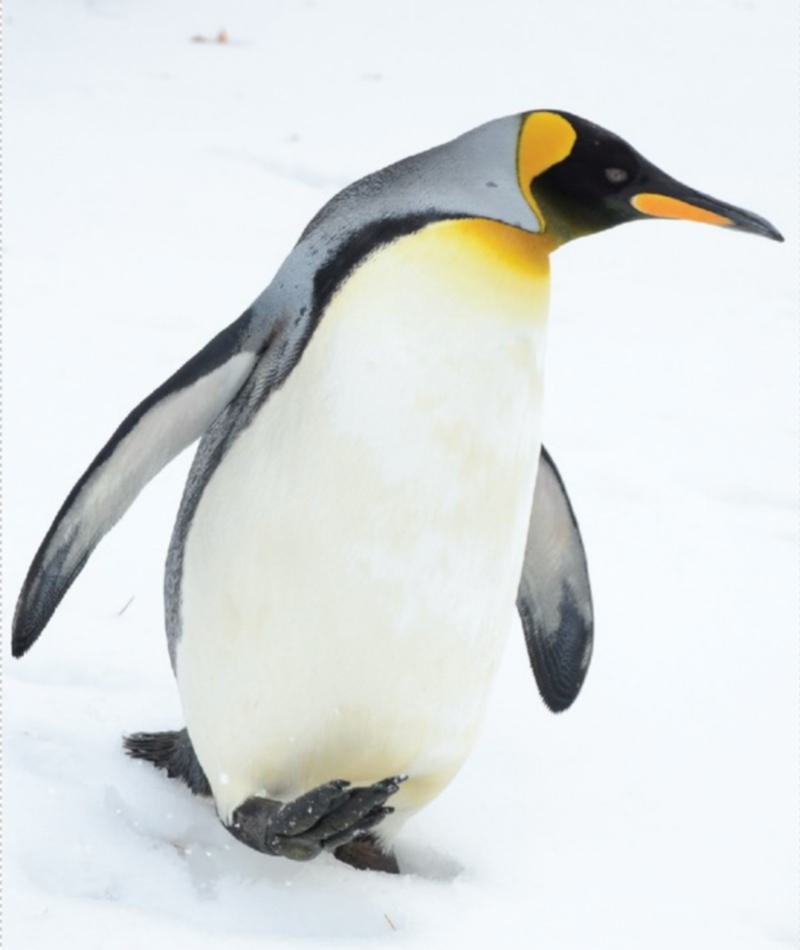
King Penguin
Aptenodytes patagonicus
Did you know?
- King penguins are a part of the Spheniscidae family, which they share with other penguins.
- They live in the ocean and on shorelines in the Antarctic.
- They are the second largest penguin species.
- They can hold their breath for over 23 minutes.
- A female will lay one egg per clutch.
Penguins
All penguins have torpedo-shaped bodies designed for moving efficiently through water. They use their wings to help them swim and their webbed feet to steer underwater. Their bones tend to be denser than those of flying birds, and the extra weight helps them dive to greater depths. A special gland removes salt from their bodies after they swallow saltwater. Penguin eyes are sensitive to the colors of the sea: violets, blues, and greens. They have a second transparent eyelid, which serve as "goggles" that protect their eyes and allow them to see while submerged. They also have unique coloration that helps them camouflage in the water: When seen from below, their white bellies blend with the light cast on the ocean surface. When seen from above, their black backs blend with the darkness of the ocean depths.
King Penguin Adaptations
King penguins each weigh around 33 pounds and stand three feet tall. Their lush feathers protect them from bitter sub-Antarctic weather. The plumage has four layers: the outer layer is oily and waterproof and encloses three downy layers for insulation. An adult king penguin can hold its breath for 23 minutes and dive over 1,000 feet deep in search of food. A typical dive is about 700 feet deep. They spend most of their lives in the water.
Threat Level
- Unknown
- Common
- Near Threatened
- Threatened
- Endangered
- Critically Endangered
- Extinct in the Wild
Common
The King Penguin is widespread and abundant.
Range
Antarctic region
Habitat
Open ocean, rocky shorelines

We care about king penguins
The Saint Louis Zoo helps king penguins through the Association of Zoos and Aquariums Species Survival Plan for this species, a program that works to increase the number of healthy captive kings. We also support them in Penguin and Puffin Coast at the Zoo.
Learn more about how we are helping a related penguin species, the Humboldt penguin, in the wild.
Find this animal in The Wild

SAINT LOUIS ZOO ZONE
The Wild
You’ll find penguins, puffins, grizzly bears, gorillas, chimpanzees, to name a few. And while visiting, you can take a ride on the Conservation Carousel or hop aboard and ride the Zooline Railroad. There are also gift shops and eateries you can enjoy.

